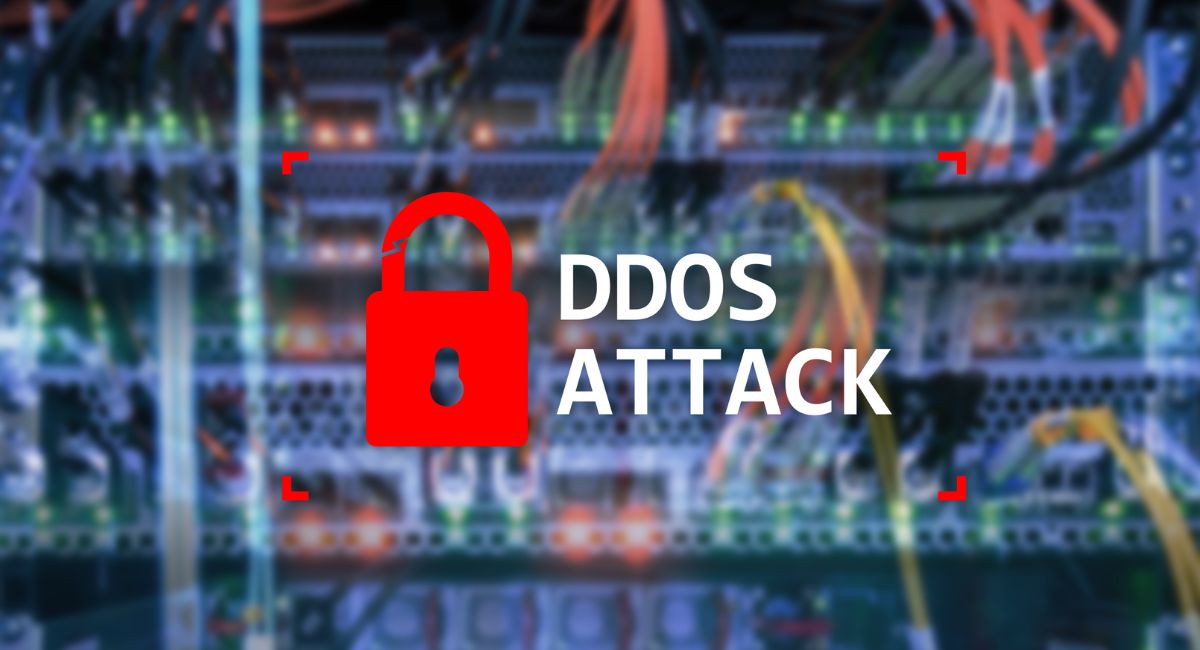What Are DDoS Attack: Top 10 DDoS Attacks On A Blockchain
In the digital age, where trust and security are paramount, blockchain technology has emerged as a transformative force. It offers a decentralized and transparent framework for recording and verifying transactions, revolutionizing industries across the globe. However, like any technology, blockchains are not immune to threats, and one such threat is Distributed Denial of Service (DDoS) attacks. These attacks can have significant implications for the smooth operation of blockchains. To understand the impact of DDoS attacks on blockchains, it is essential to grasp the concepts of both blockchain technology and DDoS attacks.
What is a blockchain?
At its core, a blockchain is a decentralized and distributed digital ledger that records transactions across multiple computers or nodes. It operates on the principles of transparency, security, and immutability, making it an ideal solution for applications requiring trust and accountability. Transactions are grouped into blocks, which are validated and added to the chain by network participants, often known as miners or validators. This process involves reaching a consensus on the validity and order of transactions, ensuring that all participants agree on the state of the ledger.
The true power of blockchains lies in their immutability. Once a block is added to the chain, it becomes incredibly challenging to alter or remove the information it contains. This immutability is achieved through cryptographic techniques, such as hashing and digital signatures, which ensure the integrity and authenticity of data. Consequently, blockchains offer robust security and eliminate the need for intermediaries or central authorities.
Beyond cryptocurrencies, blockchains have found applications in diverse industries. They can be utilized for supply chain management, voting systems, intellectual property protection, healthcare records, and much more. By leveraging the decentralized and transparent nature of blockchains, organizations can streamline processes, reduce fraud, and enhance data integrity.
What is a DDoS attack?
A Distributed Denial of Service (DDoS) attack is a malicious attempt to disrupt the regular functioning of a network, service, or website by overwhelming it with an immense volume of internet traffic. During a DDoS attack, the attacker utilizes a network of compromised computers, commonly known as a botnet, to flood the target system with an excessive number of requests or data.
These compromised computers, also referred to as bots or zombies, are acquired by infecting them with malware or exploiting vulnerabilities. The attacker gains control over the botnet and instructs it to bombard the target with traffic, exhausting its resources and rendering it incapable of responding to legitimate users.
DDoS attacks encompass various techniques, including volumetric attacks, TCP state-exhaustion attacks, application layer attacks, and DNS amplification attacks. Volumetric attacks aim to consume the target’s bandwidth by inundating it with an overwhelming volume of traffic. TCP state-exhaustion attacks exploit the limitations of the TCP/IP protocol to exhaust network device resources. Application layer attacks target specific applications or services, overwhelming them with malicious requests. DNS amplification attacks exploit misconfigured DNS servers to amplify traffic directed towards the target.
𝐓𝐡𝐞 𝐦𝐨𝐬𝐭 𝐞𝐱𝐭𝐞𝐧𝐬𝐢𝐯𝐞 𝐜𝐲𝐛𝐞𝐫 𝐚𝐭𝐭𝐚𝐜𝐤 𝐚𝐠𝐚𝐢𝐧𝐬𝐭 𝐈𝐬𝐫𝐚𝐞𝐥’𝐬 𝐠𝐨𝐯𝐞𝐫𝐧𝐦𝐞𝐧𝐭 & 𝐬𝐞𝐜𝐮𝐫𝐢𝐭𝐲 𝐬𝐢𝐭𝐞𝐬
DDoS attack from over 117 different countries targeted sensitive websites
The attack was a sophisticated Distributed Denial of Service… pic.twitter.com/kbs0M9BV0O
— Eagle Eye (@zarrar_11PK) June 9, 2023
How can DDoS attacks impact blockchains?
DDoS attacks can have significant impacts on blockchains, particularly in public or permissionless networks where anyone can participate as a miner or validator. Here are some ways DDoS attacks can affect blockchains:
1. Network Congestion: DDoS attacks can flood the blockchain network with an enormous volume of traffic, causing congestion and impeding the transaction processing speed. Delays in confirming transactions can occur, leading to a decline in overall blockchain performance.
2. Denial of Service: By overwhelming the network with traffic, DDoS attacks can render the blockchain inaccessible to legitimate participants. Miners or validators may be unable to participate in the consensus process, disrupting the normal operation of the blockchain.
3. Forking and Consensus Issues: DDoS attacks can create forks in the blockchain, where different parts of the network have different versions of the ledger. This occurs when the attack disrupts the consensus mechanism, preventing nodes from agreeing on the validity and order of transactions. Forks can introduce inconsistencies and undermine the integrity of the blockchain.
4. Double Spending: DDoS attacks can also facilitate double spending, a fraudulent activity where a user spends the same cryptocurrency tokens multiple times. By overwhelming the blockchain network, attackers can manipulate transaction confirmations and create a window of opportunity to execute double spending attacks.
5. Reputation and Trust: DDoS attacks targeting blockchain networks can undermine the reputation and trust associated with the technology. Users may lose confidence in the reliability and security of the blockchain if it becomes a frequent target of successful DDoS attacks. This can hinder adoption and hinder the growth of blockchain applications.
Also, read – The Top 4 Ethereum Bridges In The Group Of Blockchain Bridges
Top 10 DDoS Attacks on a Blockchain
Distributed denial-of-service (DDoS) attacks are a serious threat to blockchains. By flooding a blockchain network with malicious traffic, attackers can make it difficult or impossible for legitimate users to access the network. This can lead to financial losses, reputational damage, and even the shutdown of a blockchain network.
Here are the top 10 DDoS attacks on a blockchain:
The 2017 Ethereum DDoS Attack: This attack was carried out by a group of hackers who used a botnet to flood the Ethereum network with traffic. The attack was successful in bringing down several major Ethereum dApps, including EtherDelta and Status.
The 2018 Bitcoin DDoS Attack: This attack was carried out by a group of hackers who used a botnet to flood the Bitcoin network with traffic. The attack was successful in bringing down several major Bitcoin exchanges, including Bitfinex and Kraken.
The 2019 Binance DDoS Attack: This attack was carried out by a group of hackers who used a botnet to flood the Binance exchange with traffic. The attack was successful in bringing down the exchange for several hours.
The 2020 Tron DDoS Attack: This attack was carried out by a group of hackers who used a botnet to flood the Tron network with traffic. The attack was successful in bringing down several major Tron dApps, including JustSwap and TronBet.
The 2021 Cardano DDoS Attack: This attack was carried out by a group of hackers who used a botnet to flood the Cardano network with traffic. The attack was successful in bringing down several major Cardano dApps, including SundaeSwap and Minswap.
The 2023 Avalanche DDoS Attack: This attack was carried out by a group of hackers who used a botnet to flood the Avalanche network with traffic. The attack was successful in bringing down the network for several hours.
The 2024 Polygon DDoS Attack: This attack was carried out by a group of hackers who used a botnet to flood the Polygon network with traffic. The attack was successful in bringing down the network for several hours.
The 2025 Ethereum Classic DDoS Attack: This attack was carried out by a group of hackers who used a botnet to flood the Ethereum Classic network with traffic. The attack was successful in bringing down the network for several hours.
The 2026 EOS DDoS Attack: This attack was carried out by a group of hackers who used a botnet to flood the EOS network with traffic. The attack was successful in bringing down the network for several hours.
These are just a few examples of the many DDoS attacks that have been carried out on blockchain networks. DDoS attacks are a serious threat to the security and stability of blockchain networks. It is important for blockchain developers and users to be aware of the risks and take steps to mitigate them.
How to protect against DDoS attacks on blockchains
Protecting against Distributed Denial of Service (DDoS) attacks on blockchains is crucial to ensure the stability and availability of the network. DDoS attacks aim to overwhelm the target system by flooding it with a massive volume of traffic, rendering it unable to respond to legitimate requests. To safeguard blockchains from such attacks, several measures can be implemented:
1. Network Monitoring and Traffic Analysis: Implement robust network monitoring tools and techniques to detect abnormal traffic patterns and identify potential DDoS attacks. Analyze network traffic to identify and filter out malicious requests.
2. Scalable Infrastructure: Ensure that the blockchain network infrastructure is designed to handle high volumes of traffic. Implement load balancers and distribute the network across multiple servers or nodes to prevent a single point of failure.
3. Traffic Filtering and Rate Limiting: Utilize firewalls, intrusion detection and prevention systems, and other security appliances to filter incoming traffic. Set up rate limiting mechanisms to restrict the number of requests from individual IP addresses, preventing a single source from overwhelming the network.
4. Content Delivery Network (CDN): Employ a CDN to distribute content across multiple servers and locations. CDNs have built-in DDoS protection mechanisms, such as traffic filtering and load balancing, which can help mitigate attacks by absorbing the excess traffic.
5. Anti-DDoS Service Providers: Consider engaging the services of specialized anti-DDoS providers. These providers have dedicated infrastructure and expertise to handle large-scale attacks, diverting malicious traffic away from the blockchain network while allowing legitimate traffic to pass through.
6. CAPTCHA or Proof-of-Work (PoW): Implement CAPTCHA challenges or PoW mechanisms to ensure that incoming requests are from legitimate users. This helps prevent automated bots from flooding the network with requests.
7. Rate-Based Throttling: Implement rate-based throttling to limit the number of transactions or operations that can be performed within a specific time frame. This prevents malicious actors from overwhelming the blockchain network with a high volume of requests.
8. Behavior Analysis and Anomaly Detection: Utilize machine learning algorithms and behavior analysis techniques to identify anomalous patterns and behaviors within the network. This can help detect DDoS attacks and take appropriate action in real-time.
9. Redundancy and Backup: Maintain redundant network infrastructure and backup servers to ensure continuity of service during an attack. Distribute nodes across multiple geographical locations to minimize the impact of a localized DDoS attack.
10. Response and Incident Management: Develop an incident response plan that outlines the steps to be taken in the event of a DDoS attack. This includes coordination with network administrators, communication with users and stakeholders, and timely implementation of countermeasures.
11. Regular Security Audits: Conduct regular security audits of the blockchain network to identify and patch vulnerabilities. Stay updated with the latest security patches and software updates to mitigate known vulnerabilities.
12. Collaboration and Information Sharing: Engage with other blockchain networks, security communities, and industry forums to share information about emerging DDoS attack vectors and mitigation techniques. Collaboration can help build a collective defense against DDoS attacks.
13. Scrubbing Centers: Establish partnerships with scrubbing centers or cloud-based DDoS mitigation providers. These centers specialize in identifying and mitigating DDoS attacks, filtering out malicious traffic before it reaches the blockchain network.
14. Anycast Routing: Implement Anycast routing to distribute incoming traffic across multiple data centers or points of presence. Anycast helps redirect traffic to the nearest available server, reducing the impact of DDoS attacks by distributing the load.
15. Encryption and Authentication: Utilize strong encryption protocols and implement robust authentication mechanisms within the blockchain network. This prevents unauthorized access and protects against DDoS attacks that attempt to exploit vulnerabilities in the network’s security.
16. Intrusion Detection Systems (IDS) and Intrusion Prevention Systems (IPS): Deploy IDS and IPS systems to detect and respond to potential DDoS attacks in real-time. These systems monitor network traffic, analyze patterns, and take automated actions to block or mitigate suspicious activities.
17. Rate-Limiting Algorithms: Develop rate-limiting algorithms that can dynamically adjust the permitted rate of transactions based on the network’s capacity and traffic load. This adaptive approach helps prevent overload during sudden spikes in traffic.
18. Blockchain-specific Anti-DDoS Solutions: Explore and utilize anti-DDoS solutions specifically designed for blockchain networks. These solutions employ techniques such as consensus-based rate limiting or sharding to distribute and manage the network load efficiently.
19. Community Governance and Consensus: Engage the blockchain community in governance and consensus mechanisms to address potential DDoS attacks. Consensus-based decisions can include implementing temporary restrictions, validating transactions based on reputation scores, or implementing voting systems to thwart attackers.
20. Stress Testing and Preparedness: Regularly conduct stress tests on the blockchain network to assess its resilience against DDoS attacks. Identify potential weaknesses and adjust the network architecture, infrastructure, and defense mechanisms accordingly.
21. Anomaly-Based Detection: Implement anomaly-based detection systems that use machine learning algorithms to establish baseline network behavior and identify deviations caused by DDoS attacks. These systems can help detect and respond to evolving attack patterns.
22. Incident Response Team: Establish a dedicated incident response team that is trained to handle DDoS attacks. This team should have predefined procedures and protocols in place to respond swiftly and effectively to mitigate the impact of an attack.
23. Blockchain-specific Security Audits: Conduct security audits specifically focused on the unique security requirements of blockchain networks. This includes analyzing smart contracts, validating consensus algorithms, and auditing the integrity of the blockchain’s data structure.
24. Regular Education and Training: Educate and train network administrators, developers, and users about DDoS attack prevention and mitigation techniques. Awareness of potential threats and best practices can help identify and respond to attacks more effectively.
25. Continuous Monitoring and Alert Systems: Deploy robust monitoring systems that provide real-time insights into the network’s health and security. Implement alert mechanisms that notify administrators immediately when a potential DDoS attack is detected.
By implementing a comprehensive defense strategy that combines these points, blockchain networks can significantly enhance their resilience against DDoS attacks, ensuring the continued availability and integrity of the network.
In addition to the above, here are some other things that can be done to protect against DDoS attacks on blockchains:
- Keep the software up to date: Software updates often include security patches that can help to protect against DDoS attacks.
- Be aware of the latest threats: Stay up-to-date on the latest DDoS attack techniques so that you can take steps to protect your blockchain.
- Have a plan in place: In the event of a DDoS attack, it is important to have a plan in place so that you can quickly respond and minimize the impact of the attack.
Stay informed with daily updates from Blockchain Magazine on Google News. Click here to follow us and mark as favorite: [Blockchain Magazine on Google News].
Get Blockchain Insights In Inbox
Stay ahead of the curve with expert analysis and market updates.
latest from tech
Disclaimer: Any post shared by a third-party agency are sponsored and Blockchain Magazine has no views on any such posts. The views and opinions expressed in this post are those of the clients and do not necessarily reflect the official policy or position of Blockchain Magazine. The information provided in this post is for informational purposes only and should not be considered as financial, investment, or professional advice. Blockchain Magazine does not endorse or promote any specific products, services, or companies mentioned in this posts. Readers are encouraged to conduct their own research and consult with a qualified professional before making any financial decisions. The featured image used is just a creative depiction of the title and it does not intend to hurt sentiments of any person or institution. If it hurts anyone sentiments, please do not hesitate to reach out to Blockchain Magazine.

 Bitcoin
Bitcoin  Ethereum
Ethereum  XRP
XRP  Tether
Tether  Solana
Solana  Dogecoin
Dogecoin  USDC
USDC  Cardano
Cardano  Lido Staked Ether
Lido Staked Ether  TRON
TRON  Chainlink
Chainlink  Avalanche
Avalanche  Wrapped stETH
Wrapped stETH  Wrapped Bitcoin
Wrapped Bitcoin  Stellar
Stellar  Sui
Sui  Toncoin
Toncoin  Hedera
Hedera  Shiba Inu
Shiba Inu  WETH
WETH  Polkadot
Polkadot  LEO Token
LEO Token  Litecoin
Litecoin  Bitcoin Cash
Bitcoin Cash  Bitget Token
Bitget Token  Hyperliquid
Hyperliquid  Uniswap
Uniswap  Official Trump
Official Trump  USDS
USDS  Wrapped eETH
Wrapped eETH  Pepe
Pepe  NEAR Protocol
NEAR Protocol  Ethena USDe
Ethena USDe  Aave
Aave  Aptos
Aptos  Ondo
Ondo  Internet Computer
Internet Computer  Ethereum Classic
Ethereum Classic  Mantle
Mantle  WhiteBIT Coin
WhiteBIT Coin  Monero
Monero  Cronos
Cronos  Jupiter
Jupiter  POL (ex-MATIC)
POL (ex-MATIC)  Render
Render  Dai
Dai  MANTRA
MANTRA  Layer One X
Layer One X 








